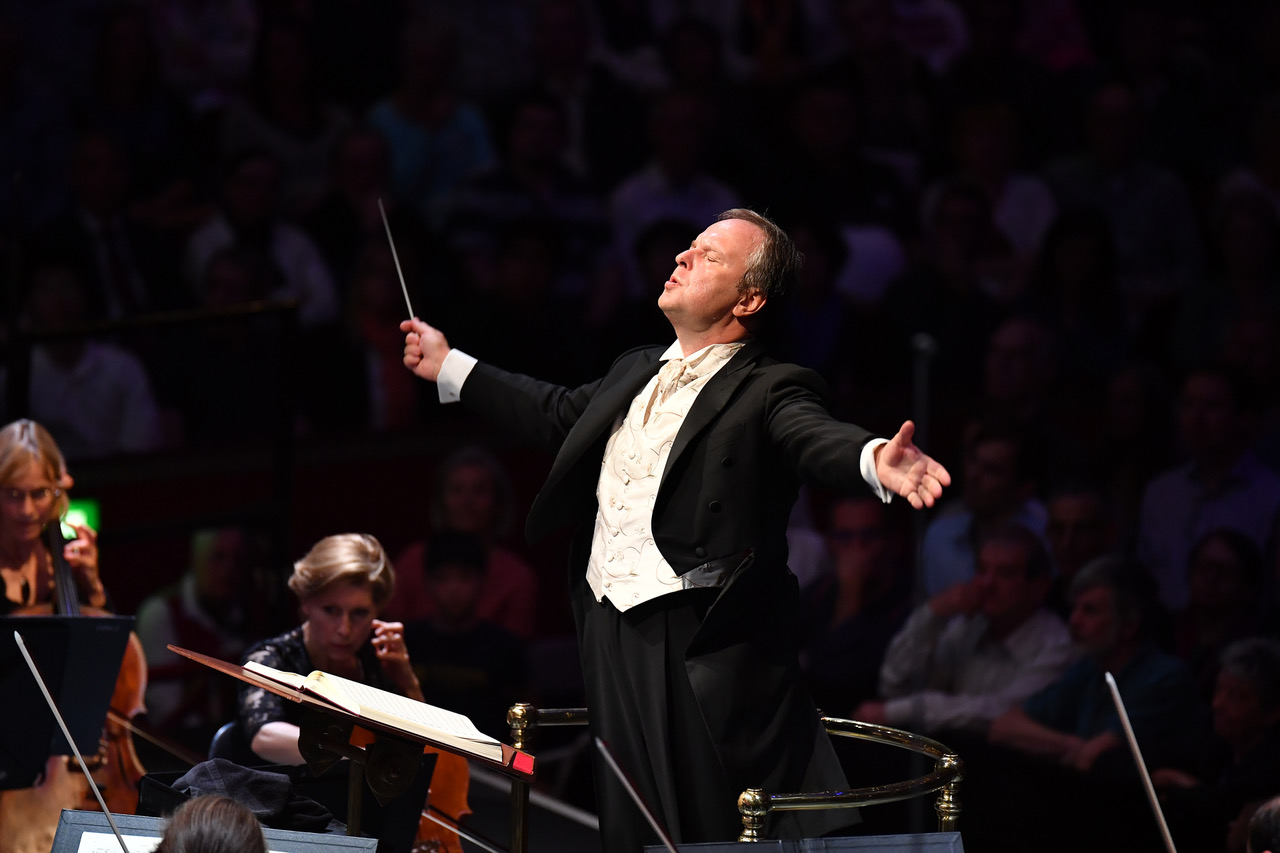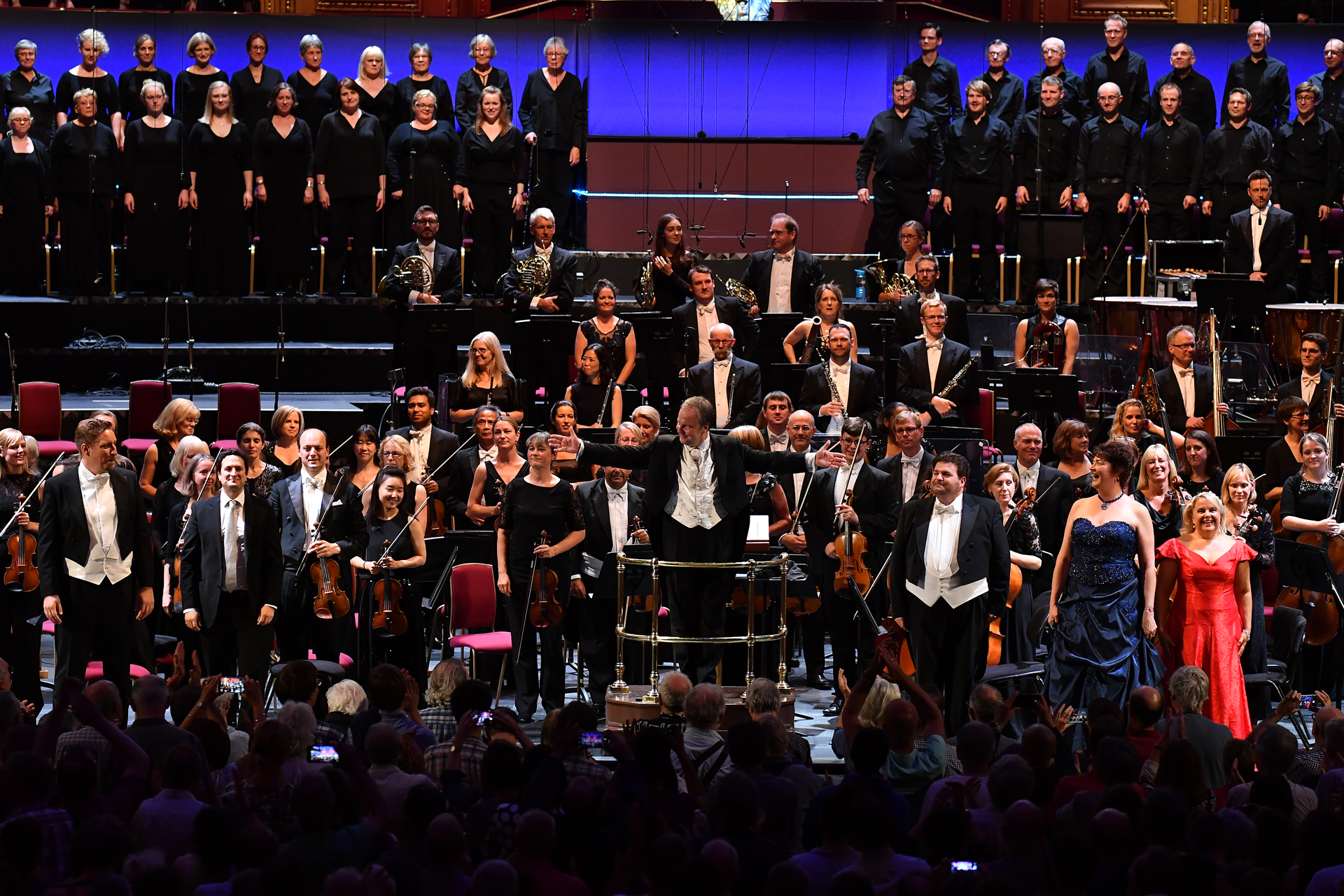Time was, not long ago, when the very word “premiere” was enough to ensure a sizeable smattering of red plush holes in the Royal Albert Hall audience. It seemed people did not want to risk attending new works for fear they would sound ghastly. Any artform depends for its lifeblood on strong new creations and an audience for them; so it is excellent that this concert was the second in a matter of days in which the place was packed out for a Prom including brand-new pieces. In a time of welcome diversity of styles and approaches, are music-lovers finally becoming curious, even eager, to hear the best of what today’s composers have to offer? I hope so – because otherwise it would mean everyone was only there for Beethoven’s Ninth Symphony yet again.
This programme included two world premieres. Jonathan Dove's We Are One Fire is a 90th anniversary celebration for the BBC Symphony Chorus, inspired by the message of humanity in Schiller’s Ode to Joy and drawing on the idea that, in the composer’s words, “20th-century archaeology showed us that we are all indeed brothers and sisters.”
Dove’s regular librettist, Alisdair Middleton, has provided spare, focused words with a music of their own (try saying “a million, million shimmering leaves” aloud and you’ll see what I mean) and Dove’s a cappella piece, in three short contrasting movements, is spare and focused as well, elegantly shaped and creating with choir alone some of the musical effects you might more often encounter with a full, glittering orchestra: for instance, “River running” becomes an ongoing perpetuum mobile with the word “Red” glinting above it in multiple sunbursts. It’s a beautifully written, warm and moving work, and the chorus with its conductor Neil Ferris seemed to perform it straight from the heart.
The Swiss composer Dieter Ammann has produced that exciting rarity, a terrific new piano concerto. Subtitled "Gran Toccata", it does what it says on the page: it’s a grand-scale display piece, a tremendous workout for soloist and orchestra alike, unfolding chiefly at high speed in one movement lasting about 25 minutes.  On first hearing it seems to be all about managing the flow of energy through the busy canvas, for the sound of which “a million, million shimmering leaves” would not be entirely inappropriate. The busy pianist is often absorbed into the panoply of orchestral textures; here and there, moments emerge when the soloist is alone and meditative. Frequently the piano sound is surrounded and blended with ample percussion, which creates the fascinating impression of magnifying the instrument and its colouristic potential.
On first hearing it seems to be all about managing the flow of energy through the busy canvas, for the sound of which “a million, million shimmering leaves” would not be entirely inappropriate. The busy pianist is often absorbed into the panoply of orchestral textures; here and there, moments emerge when the soloist is alone and meditative. Frequently the piano sound is surrounded and blended with ample percussion, which creates the fascinating impression of magnifying the instrument and its colouristic potential.
The language is original and wide-ranging, from snippets of Messiaen-like melodic motifs to the oozing microtones in the strings during the extended coda where everything slows down, turning unexpected corners into a new type of landscape. Springing from one spiky note on the piano, repeated with something resembling a bebung effect, the work ends more or less as it began, that motif transformed into a musical heartbeat. I wonder if the whole is perhaps a teeny bit over-extended – some of the ideas seemed to take up more time and space than they supported. Still, co-commissioned by a host of international festivals, each of which will present the piece in due course, this is a concerto that should reward repeated hearing – there is a lot going on, and I mean a lot.
Andreas Haefliger was the splendid soloist, cool, capable and unfazed through Ammann’s most dizzying pianistic challenges, and the conductor Sakari Oramo (pictured above) paced, balanced and defined the laden sonic canvas to fine effect. The piece might fare better in one of its other home halls, such as Boston or Lucerne, in which a clearer acoustic could make it easier for audience and orchestra alike to hear what is really going on amid all that sound.  Beethoven’s Ninth Symphony is, of course, a Proms favourite. Oramo’s take on it was straightforward, unusually light-footed and rather friendly. Though very well played by the BBC Symphony Orchestra, the interpretation could have used more grandeur and imagination in the first three movements; but the choral finale took off with Mika Kares’s eloquent bass solo; the BBC Symphony Chorus and the team of soloists – Anu Komsi (soprano), Hilary Summers (mezzo-soprano), Michael Weinius (tenor) and Kares – delivered Beethoven’s often ungrateful vocal writing with great gusto (curtain call pictured above). The message of universal siblinghood soared home, sending out Beethoven and Schiller’s “kiss to the whole world” to a country that currently needs it more than ever before.
Beethoven’s Ninth Symphony is, of course, a Proms favourite. Oramo’s take on it was straightforward, unusually light-footed and rather friendly. Though very well played by the BBC Symphony Orchestra, the interpretation could have used more grandeur and imagination in the first three movements; but the choral finale took off with Mika Kares’s eloquent bass solo; the BBC Symphony Chorus and the team of soloists – Anu Komsi (soprano), Hilary Summers (mezzo-soprano), Michael Weinius (tenor) and Kares – delivered Beethoven’s often ungrateful vocal writing with great gusto (curtain call pictured above). The message of universal siblinghood soared home, sending out Beethoven and Schiller’s “kiss to the whole world” to a country that currently needs it more than ever before.















Add comment